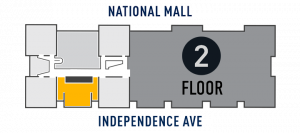This is a box built and used by American rocket pioneer Robert H. Goddard in experiments in 1916 to determine the amount of magnesium flash powder to be carried in an uncrewed rocket to strike the surface of the Moon to signal its arrival. At that time, it was unknown if radio signals could extend into deep space.
Goddard calculated that 2.6 lbs (1.2 kg) of flash powder was needed for the rocket to be "just visible" and 13.8 lbs (6.2 kg) was needed for the flash to be "strikingly visible." He wrote up the experiment treatise, "A Method of Reaching Extreme Altitudes" in 1919, which showed that if the rocket were developed and used stages, it was theoretically capable of a flight to the Moon. The box was donated in 1965 to the Smithsonian by Mrs. R.H. Goddard.
Display Status
This object is on display in Destination Moon at the National Air and Space Museum in Washington, DC.

Object Details
Date
1915-1916
Country of Origin
United States of America
Type
EQUIPMENT-Test
Manufacturer
Dr. Robert H. Goddard
Dimensions
3-D: 77.5 x 17.8 x 20.3cm (30 1/2 x 7 x 8 in.)
Display (display with door open): 78.7cm × 38.7cm × 24.1cm, 10.2kg (2 ft. 7 in. × 1 ft. 3.3 in. × 9.5 in., 22 1/2lb.)
Materials
Wood box; glass tubes; rubber stoppers and covered by wax; cotton; metal hinges, wires, switches, and other metal parts
Inventory Number
A19650313000
Credit Line
Mrs, Robert H. Goddard
Data Source
National Air and Space Museum
Restrictions & Rights
Usage conditions apply
For more information, visit the Smithsonians Terms of Use.

